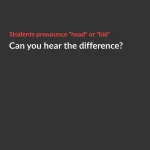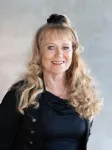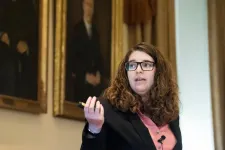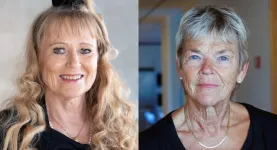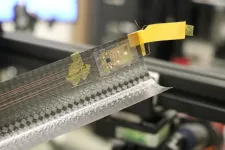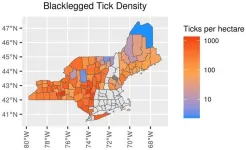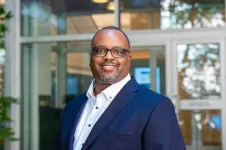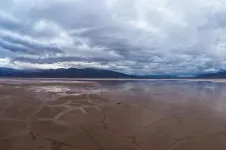The kids and grandkids of immigrants to the United States usually lose the ability to speak their heritage language fluently. Without access to the heritage language, second- and third-generation Americans may use distinct words and pronunciations in the dominant language, English, to assert their ethnic identities and connect to their communities.
Sociolinguists have long viewed these shifts as markers of cultural change. Like differences in food, clothing and religion, differences in language are subtle ways that groups distinguish themselves along ethnic boundaries. Recent work has pivoted from asking what are the differences to why are there differences? How are they using language to carve out identity? What is the local context that influences how people speak?
One theory posits that ethnic markers are prevalent when two or more cultural groups interact. A recent study led by University of Utah and Brigham Young University researchers is the first to directly test it in the real world. The linguists compared how white and Pacific Islander teens pronounced a series of English words in two Utah high schools with different ethnic makeups: One with a predominately white student body and the other with a lack of an ethnic majority. They found greater phonetic markers among students at the school with more diversity, indicating that the ethnic boundaries are more prominent in that setting.
“Part of identity comes from not just who you’re like, but who you’re different from,” said lead author Lisa Johnson. Now an assistant professor of linguistics at Brigham Young University (BYU), she collected the data as an anthropology doctoral student at the U. “Adolescence is a time when youth gain the cognitive ability and social desire to separate themselves from their parents and find their place in the wider world. In that way, adolescent social structures are like a microcosm of the larger society.”
The paper published in Human Nature on Oct. 21, 2024.
Language shifts as subtle signals
Establishing identity is a deeply human experience. Scholars attribute our success as a species to the ability to form coalitions and cooperate. Over time, we’ve developed conscious and unconscious signals to organize ourselves into groups. These signals include subtle differences in pronunciation, which we may not be conscious of.
Sociolinguistic research in the U.S. has generally ignored Pacific Islanders, a group with deep roots in the west, especially Utah. Pacific Islanders first came to Utah in the late 1800s when Native Hawaiians migrated to the state after contact by The Church of Jesus Christ of Latter-day Saints missionaries. In the 60s, a new wave of people from the Samoa and the Kingdom of Tonga settled in the Wasatch Front, followed by more recent migrations of Fijian, Marshallese, Micronesian and other groups from around the Pacific Rim. Despite different origins, customs and languages, Pacific Islanders have a strong desire to court common values such as religion and a strong sense of responsibility to your family and surrounding community, said Adrian Bell, anthropologist at the U and co-author of the study.
“This study highlights the processes that influence language shifts and what helps preserve the culture. The older generations of Pacific Islanders really care that their grandchildren will reflect some of what they grew up with in their heritage country,” said Bell, whose mother was among the early Tongan immigrants who arrived in the 1970s. “The PI group isn’t necessarily large, but it’s very visible. Part of it is how we see ourselves, and another part is how others see us.”
Speaking with tongues
One way of marking identity is with subtle variations in vowel pronunciation. Vowels are all about the tongue’s location in the mouth; when speaking a vowel, the tongue can be positioned on a scale from high to low and front to back. For example, say the words bit, bet and bat—notice how your tongue moves lower and farther back?
“By varying tongue positions, speakers in every variety of English are engaged in systematic changes in the pronunciation of vowels, called ‘vowel shifts,’ that serve to differentiate one dialect from another,” explained Marianna Di Paolo, sociolinguist at the U and co-author of the paper, who served as Johnson’s U’s faculty advisor.
This study focused on a series of recent vowel changes called the “California Shift,” a phenomenon mocked in the Saturday Night Live skit, “The Californias”—think “trahp” instead of “trap.” Try it—your tongue gets lower and moves farther back in the mouth.
The researchers chose 130 words with different vowels in a variety of word contexts. Participants spoke each word as they flashed across a computer screen in random order, displaying each word twice. Using audio software, the authors analyzed the resonant frequencies of speakers’ vowels to identify the subtle differences pronunciation.
They found strong evidence of ethnic markers at the diverse school. For example, there was a big difference in how students said words like “bit” or “kit.” The Pacific Islanders said this vowel using the more traditional pronunciation with the tongue in a high, front position. In contrast, the white students were much more likely to use the California Shift pronunciation, lowering and shifting the tongue backwards so that “bit” sounded more like “bet.” Surprisingly, this difference was not observed at the predominately white school. In other words, there was a stronger tendency for groups to differentiate where more groups shared the same social space.
“In my mind, that's an indication of a growing awareness of diversity as the demographics of the state are changing,” Johnson said. “This is happening in Utah right now. It’s interesting to see how we’re grappling with those changes, not just in how we mark different groups, but also in how we relate to each other.”
The study serves as a snapshot at two different points of progress—people in the suburbs have more diversity than before, but not as much diversity as the more urban school. The authors hope other researchers can apply this new framework to show how a person’s cultural identity is influenced by the context in which they grow up.
“The bigger picture around ethnic marker theory is to understand what drives cultural change and what helps preserve aspects of culture itself,” Bell said. “Right now, we’re seeing some Pacific Islanders form a kind of Polynesian pan-ethnic identity, probably also happening among our Micronesian and Melanesian relatives, using shared words to build a larger community around shared values.”
The paper, “Evidence for greater marking along ethnic boundaries,” published Oct. 21, 2024, in the journal Human Nature. The research was funded by the National Science Foundation under grant # 1749582.
END
